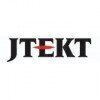Filter interviews by
Marquardt Interview Questions and Answers
8 Interview questions
I hold a degree in Quality Assurance and have over 5 years of experience in quality control processes across various industries.
Bachelor's degree in Quality Assurance from XYZ University.
5 years of experience in quality control at ABC Corporation, focusing on product testing.
Implemented a new quality management system that reduced defects by 20%.
Conducted regular audits and inspections to ensure compliance with in...
A project is a temporary endeavor with a specific goal, timeline, and budget.
Projects have defined objectives and deliverables.
They involve a team of people working together towards a common goal.
Projects have a start and end date, and are unique in nature.
Examples: building a new website, launching a marketing campaign, developing a new product.
UART is a serial communication protocol with one transmitter and one receiver, while SPI is a synchronous serial communication protocol with one master and multiple slaves.
UART stands for Universal Asynchronous Receiver/Transmitter, while SPI stands for Serial Peripheral Interface.
UART uses two communication lines (TX and RX) for data transfer, while SPI uses four communication lines (MISO, MOSI, SCK, and SS).
UART...
CAN protocol is a communication protocol used in automotive and industrial applications for high-speed data transmission.
CAN stands for Controller Area Network
It is a message-based protocol
Allows multiple electronic control units (ECUs) to communicate with each other without a host computer
Commonly used in automotive industry for communication between various components like engine control units, sensors, and actu...
Sales and marketing involves promoting and selling products or services to customers through various strategies and channels.
Sales and marketing is the process of identifying and understanding customer needs and wants.
It involves creating and implementing strategies to promote and sell products or services.
Sales and marketing activities include market research, advertising, sales presentations, and customer relati...
I manage multiple tasks by prioritizing, delegating, and using time management techniques.
Prioritize tasks based on urgency and importance
Delegate tasks to team members when possible
Use time management techniques such as creating to-do lists and setting deadlines
Avoid multitasking and focus on one task at a time
Utilize tools and technology to streamline and automate tasks
Communicate effectively with team members t...
HIL testing stands for Hardware-in-the-Loop testing, which is a type of testing that involves testing a system or component using real hardware.
HIL testing is used to test complex systems that involve hardware and software components
It involves connecting the hardware component to a simulation environment to test its functionality
HIL testing is commonly used in the automotive industry to test electronic control un...
HIL testing stands for Hardware-in-the-Loop testing, a technique used to test complex systems by simulating real-world conditions.
HIL testing involves connecting a physical system or component to a simulation environment
The simulation environment generates signals that mimic real-world conditions
The signals are fed into the physical system, which responds as it would in the real world
HIL testing is commonly used i...
Marquardt Interview Experiences
14 interviews found
I applied via Campus Placement and was interviewed in Jun 2024. There were 3 interview rounds.
Pure Electronics MCQ of 30 min &. 30 min of Aptitude , Reasoning and English.
level of questions are gate level
(3 Questions)
- Q1. Explain Project
- Ans.
A project is a temporary endeavor with a specific goal, timeline, and budget.
Projects have defined objectives and deliverables.
They involve a team of people working together towards a common goal.
Projects have a start and end date, and are unique in nature.
Examples: building a new website, launching a marketing campaign, developing a new product.
- Q2. Explain CAN protocol
- Ans.
CAN protocol is a communication protocol used in automotive and industrial applications for high-speed data transmission.
CAN stands for Controller Area Network
It is a message-based protocol
Allows multiple electronic control units (ECUs) to communicate with each other without a host computer
Commonly used in automotive industry for communication between various components like engine control units, sensors, and actuators
- Q3. Differntiate between UART VS SPI
- Ans.
UART is a serial communication protocol with one transmitter and one receiver, while SPI is a synchronous serial communication protocol with one master and multiple slaves.
UART stands for Universal Asynchronous Receiver/Transmitter, while SPI stands for Serial Peripheral Interface.
UART uses two communication lines (TX and RX) for data transfer, while SPI uses four communication lines (MISO, MOSI, SCK, and SS).
UART is a...
(2 Questions)
- Q1. Relocatio at Pune
- Q2. Family Background
Interview Preparation Tips
- Electronics
- Embedded C
Skills evaluated in this interview
I appeared for an interview before Mar 2024, where I was asked the following questions.
- Q1. Tell me about yourself.
- Q2. What is your colification and experience?
- Ans.
I hold a degree in Quality Assurance and have over 5 years of experience in quality control processes across various industries.
Bachelor's degree in Quality Assurance from XYZ University.
5 years of experience in quality control at ABC Corporation, focusing on product testing.
Implemented a new quality management system that reduced defects by 20%.
Conducted regular audits and inspections to ensure compliance with industr...

(1 Question)
- Q1. What is sales and Marketing?
- Ans.
Sales and marketing involves promoting and selling products or services to customers through various strategies and channels.
Sales and marketing is the process of identifying and understanding customer needs and wants.
It involves creating and implementing strategies to promote and sell products or services.
Sales and marketing activities include market research, advertising, sales presentations, and customer relationshi...
(1 Question)
- Q1. How you manage multiple task at same time?
- Ans.
I manage multiple tasks by prioritizing, delegating, and using time management techniques.
Prioritize tasks based on urgency and importance
Delegate tasks to team members when possible
Use time management techniques such as creating to-do lists and setting deadlines
Avoid multitasking and focus on one task at a time
Utilize tools and technology to streamline and automate tasks
Communicate effectively with team members to coo...
I applied via Approached by Company and was interviewed before Feb 2023. There were 3 interview rounds.
Embedded C coding test- searching sorting algorithm
(1 Question)
- Q1. Basics of embedded system and working experience
(1 Question)
- Q1. Salary negotiation
I appeared for an interview before Mar 2024.
(1 Question)
- Q1. Mostly plastic molding
I applied via Naukri.com and was interviewed in Oct 2022. There were 2 interview rounds.

(2 Questions)
- Q1. Tell about hil testng
- Ans.
HIL testing stands for Hardware-in-the-Loop testing, a technique used to test complex systems by simulating real-world conditions.
HIL testing involves connecting a physical system or component to a simulation environment
The simulation environment generates signals that mimic real-world conditions
The signals are fed into the physical system, which responds as it would in the real world
HIL testing is commonly used in aut...
- Q2. Tell me about your role
Interview Preparation Tips
I applied via Naukri.com and was interviewed before Jun 2023. There was 1 interview round.
(2 Questions)
- Q1. Explain V Cycle of SDLC.
- Ans.
V Cycle is a software development model where each phase is represented by a downward and upward slope forming a V shape.
Requirements are gathered at the top left of the V, followed by design, implementation, testing, and deployment.
Each phase has a corresponding testing phase to ensure quality at every step.
The V Cycle allows for early detection and correction of defects.
It is also known as the Verification and Valida...
- Q2. What are the testing strategies?
Skills evaluated in this interview
I applied via Naukri.com and was interviewed in Oct 2022. There were 2 interview rounds.

(2 Questions)
- Q1. Tell me about yourself
- Q2. Tell about hil testing
- Ans.
HIL testing stands for Hardware-in-the-Loop testing, which is a type of testing that involves testing a system or component using real hardware.
HIL testing is used to test complex systems that involve hardware and software components
It involves connecting the hardware component to a simulation environment to test its functionality
HIL testing is commonly used in the automotive industry to test electronic control units (...
Interview Preparation Tips
Skills evaluated in this interview
I applied via Approached by Company and was interviewed in Mar 2022. There were 3 interview rounds.
(3 Questions)
- Q1. Related to profile testing and validation
- Q2. Full technical and profile
- Q3. Related to resume and profile
(3 Questions)
- Q1. With German team and local team
- Q2. Technically and related to profile
- Q3. Technical and profile
(2 Questions)
- Q1. What are your salary expectations?
- Ans.
I expect a competitive salary that reflects my experience and skills.
I am looking for a salary that is commensurate with my level of expertise and the responsibilities of the role.
I have researched the market rates for Senior Engineers in this industry and location.
I am open to discussing the salary range for this position based on the overall compensation package and benefits offered.
I believe my skills and experience...
- Q2. Tell me about yourself.
- Ans.
I am an experienced Senior Engineer with a strong background in software development and project management.
Over 10 years of experience in software development
Proficient in multiple programming languages such as Java, C++, and Python
Led successful projects from conception to completion, ensuring on-time delivery and high-quality results
Strong problem-solving and analytical skills
Excellent communication and teamwork abi...
Interview Preparation Tips
I applied via Approached by Company and was interviewed in Mar 2022. There were 3 interview rounds.
(3 Questions)
- Q1. Related to profile testing and validation
- Q2. Full technical and profile
- Q3. Related to resume and profile
(3 Questions)
- Q1. With German team and local team
- Q2. Technically and related to profile
- Q3. Technical and profile
(2 Questions)
- Q1. What are your salary expectations?
- Q2. Tell me about yourself.
Interview Preparation Tips
Top trending discussions






Marquardt Interview FAQs
The duration of Marquardt interview process can vary, but typically it takes about less than 2 weeks to complete.
Tell us how to improve this page.
Marquardt Interviews By Designations
- Marquardt Engineer Interview Questions
- Marquardt Senior Engineer Interview Questions
- Marquardt Quality Checker Interview Questions
- Marquardt Software Engineer Interview Questions
- Marquardt Graduate Trainee Interview Questions
- Marquardt Senior Software Engineer Interview Questions
- Marquardt L2 Engineer Interview Questions
- Marquardt Design Engineer Interview Questions
- Show more
Interview Questions for Popular Designations
- Analyst Interview Questions
- Software Engineer Interview Questions
- Consultant Interview Questions
- Associate Software Engineer Interview Questions
- Graduate Engineer Trainee (Get) Interview Questions
- Accountant Interview Questions
- Senior Software Engineer Interview Questions
- Data Analyst Interview Questions
- Show more
Overall Interview Experience Rating
based on 11 interview experiences
Difficulty level
Duration
Interview Questions from Similar Companies
Marquardt Reviews and Ratings
based on 195 reviews
Rating in categories
|
Senior Engineer
102
salaries
| ₹10.5 L/yr - ₹17 L/yr |
|
Technical Lead
101
salaries
| ₹14 L/yr - ₹23 L/yr |
|
Software Engineer
99
salaries
| ₹9 L/yr - ₹15 L/yr |
|
Engineer
62
salaries
| ₹8.1 L/yr - ₹15 L/yr |
|
Associate Engineer
56
salaries
| ₹3.6 L/yr - ₹7.8 L/yr |

Bosch

Yazaki

Hitachi Astemo

Faurecia
- Home >
- Interviews >
- Marquardt Interview Questions













